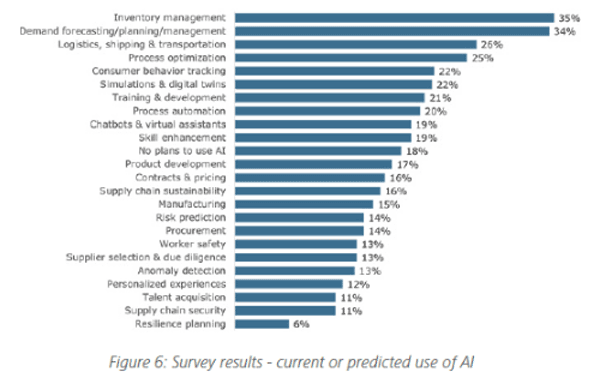MHI and long-time partner Deloitte are fresh out with their annual supply chain study, always released at about this time each year.
The annual study actually evolved from a report that MHI did alone for many years that looked at the state of the materials handling market, noting its cyclical nature and providing sales numbers for the market overall and individual types of equipment.
Gilmore Says.... |
 |
I will just say that as usual it just comes down to the data, which always seems to be just beyond our grasp.
|
 |
What do you say? |
|
| Click here to send us your comments |
| |
|
|
|
But more than a decade ago, MHI took the report upstream as part of a an on-going strategy to make the materials handling industry generally and MHI specifically more relevant to the supply chain conversation.
Most of the reports have been solid, in my opinion.
For the 2025 report, the theme is the interesting topic of ‘supply chain orchestration,” a term bandied about by many but meaning different things to different people. The overall narrative of the study is again as usual supported by lots of survey data.
Let’s take a look.
In the introduction, the report notes the importance of orchestration, writing that “Many of the biggest challenges for today’s supply chain decision makers revolve around trying to effectively orchestrate the disparate elements of their increasingly complex supply networks and logistics systems.”
I’ll agree with that.
The report later calls it the “orchestration imperative” – I believe that being the first time I’ve seen that term used. It amplifies that message with this: “End-to-end supply chain orchestration, which seamlessly connects every stage of the supply chain, has emerged as a critical strategy for organizations to remain competitive.”
And not surprisingly, the report says AI will play a critical role in the orchestration paradigm, especially a newer form called “agentic AI.”
This, the report says, will involve autonomous AI agents that will have the ability to execute assigned tasks on their own by acquiring and processing multi-modal data, using available tools to complete tasks, and coordinating with other AI agents.
Personally, I know little about this as this point, but that does seem to be where we are headed.
In the end, the report says that these AI agents have the potential to help with a wide range of supply chain activities, such as identifying and implementing new routes for outbound transportation or making supply plan adjustments based on new market data.
So what I am hearing is that this is about the totally connected supply chain, with processes increasingly being executed by intelligent AI agents.
Welcome to the brave new world.
So what does best-in-class supply chain orchestration look like?
The report says it’s something like this: seamless supply chain orchestration is characterized by:
• Strong underlying data (both internal and external)
• A best-in-class and fully integrated digital stack
• A workforce that is digital-fluent, collaborative, and agile
• And, in recent years, effective use of advanced analytics and generative AI (GenAI) tools.
“These capabilities combine to enable data-driven decision-making, closer collaboration, and improved handling of exception scenarios across the entire supply chain network,” the report says.
I don’t believe many companies have made it to this elevated state, but it is certainly aspirational.
The building blocks to achieve the vision are three, the report says: (1) unified, accurate data; (2) fully integrated supply chain systems; and (3) AI and other enabling technologies.
I will just say that as usual it just comes down to the data, which always seems to be just beyond our grasp.
I believe I am going to wrap it up here for now and be back with a part 2 review and comment next week. Will end it with a chart from the report that shows the top areas where supply chain organizations are already using AI—or plan to use it in the next two years. That is led by inventory management (35%); demand forecasting and supply chain planning/warehouse management (34%) and logistics, shipping, and transportation (27%). Note the original chart is fuzzy, so that comes across here:

Back with more next week.
What is your reaction to the MHI report for 2025? Let us know your thoughts at the Feedback section below.
Your Comments/Feedback
|